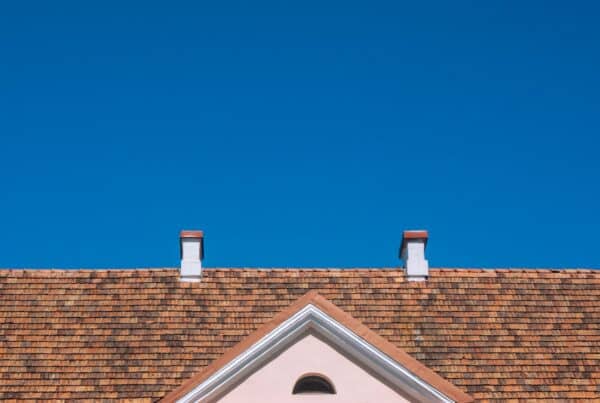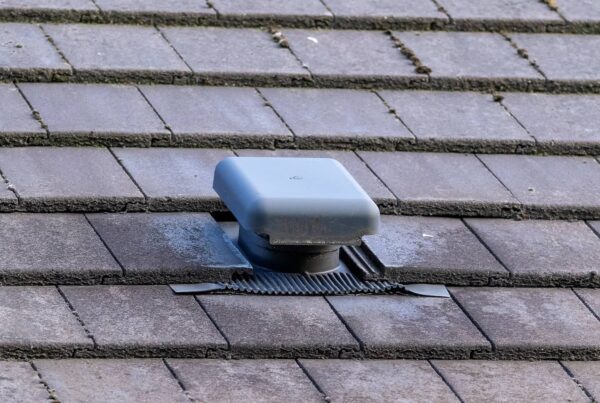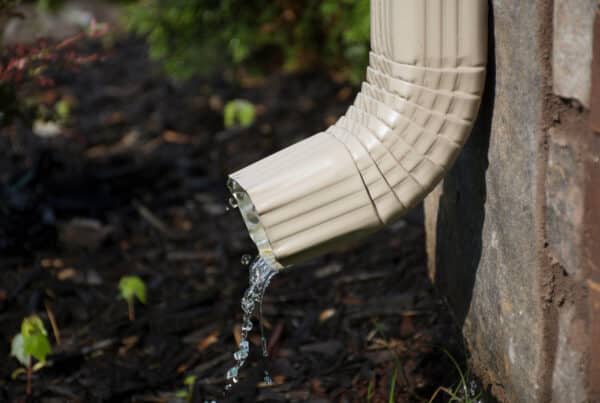
A complete and sturdy roof is an important shield against the elements, keeping your home safe and comfortable. As a homeowner, understanding the essential parts of your roof can make a world of difference. If you have no idea where to start, you’re in the right place!
This post aims to demystify nine crucial parts of a typical roof to be familiar with – whether you’re tackling routine maintenance or discussing repairs and renovations, knowing what to look for and spotting issues early can save money and maintain peace of mind.
1) Decking (Sheathing)
Firstly, the roof decking (or sheathing) is the base layer of your roof. It’s usually made of plywood or oriented strand board (OSB). This layer provides structural support and a foundation for the other roofing materials. Think of it as the backbone of your roof, keeping everything in place and solid.
2) Trusses
Secondly, trusses are the framework that holds up your roof. Made from wood or metal, these triangular structures distribute the roof’s weight evenly. There are different types of trusses, like gable and hip trusses, each designed to fit specific roof shapes. Proper trusses are essential for a stable, strong roof.
3) Underlayment
Underlayment is a protective layer installed on the decking before the covering goes on. It acts as a moisture barrier, preventing water from reaching the decking. Common materials for underlayment include felt and synthetic options. The extra layer helps keep your roof dry and extends its life.
4) Roof Covering
Then, the roof covering is the outermost layer and the one you see. It shields your home from the weather. Common materials include asphalt shingles, metal, and tiles. Each has its pros and cons in terms of durability, looks, and cost. Choosing the right roof covering is crucial for protecting your home and enhancing its appearance.
5) Flashing
Flashing is used around areas of the roof that are prone to leaks, like valleys, chimneys, and vents. Made from metal or rubber, flashing directs water away from these vulnerable spots, preventing leaks. For flashing, regular upkeep is key to keeping it waterproof.

6) Roof Vents
Vents are vital for ventilating your attic and managing temperature and moisture. Types of vents include ridge vents, soffit vents, and gable vents. Proper ventilation prevents heat buildup in summer and moisture in winter, which can cause damage and affect your home’s energy efficiency.
7) Gutters and Downspouts
Gutters and downspouts manage rainwater runoff, directing it away from your roof and foundation. This helps prevent water damage and soil erosion around your home. Keeping your gutters and downspouts clean and in good condition is essential for effective water drainage.

8) Ridge and Hip
The ridge is the highest point where two sections meet, while the hip is the external angle formed by the intersection of two slopes. These parts help shape your roof and ensure structural integrity. Ridge and hip caps seal these areas, keeping water out and adding a finished look.
9) Eaves and Rakes
Finally, eaves are the edges of the roof that overhang the walls of your house, and rakes are the sloped edges at the gable ends. They help direct water away from your home’s walls and foundation, protecting them from water damage. Regularly maintaining eaves and rakes is important to keep your home in good shape.

Recommended Maintenance
When it comes to TLC for your roof, certain upkeep is essential to maintain its good shape and extend its service.
- Clear Debris: To begin, remove leaves, branches, and other debris from your roof, gutters, and downspouts. Clogged gutters can lead to water backup and damage to your roof and foundation.
- Check for Moss and Algae: If you notice moss or algae growing, remove it to prevent damage to the shingles. You can use a mixture of water and bleach to kill the growth.
- Trim Overhanging Branches: Overhanging tree branches can scrape your roof and drop debris onto it. Trim these branches to prevent damage and reduce the risk of moss growth.
- Look for Leaks: Check your attic for signs of leaks, such as water stains, mold, or damp insulation. Early detection can prevent more extensive and expensive repairs.
When to Call a Professional
Calling in the experts when it’s needed can save you time, money, and hassle. Here are some situations where it’s best to get a professional on the phone:
- Persistent Leaks: If you notice ongoing leaks despite your efforts to fix them, it’s time to call a professional. Leaks can cause significant damage if not addressed promptly.
- Extensive Damage: After a severe storm, check for widespread damage like missing shingles, large patches of mold, or sagging areas. Professional roofers have the tools and expertise to handle major repairs safely.
- Sagging Roof: When a roof is sagging, it indicates a serious structural issue that needs immediate attention. A professional can assess the problem and recommend the best course of action.
- Age of Roof: If it’s nearing the end of its expected lifespan (usually 20-25 years for asphalt shingles), consider having it inspected by a professional. They can advise whether you need repairs or a full replacement.
- Regular Inspections: Have a professional inspect your roof at least twice a year, ideally in spring and fall. They’ll look for signs of damage like cracked, missing, or curling shingles, and inspect the flashing around chimneys and vents for rust or cracks.
Conclusion
Essentially, knowing the important components of your roof helps you take better care of your home. Regular maintenance and timely repairs can save you money and prevent bigger issues down the road.
Taking care of your roof ensures it will protect your home and keep you comfortable for years to come. If you have any questions or spot any problems, don’t hesitate to reach out to a professional. In Olympia, WA, and surrounding areas, call Boggs Inspection Services for expert inspections and guidance.



